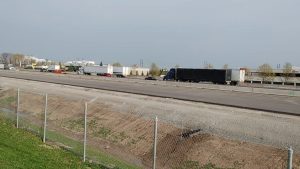I parted curtains yesterday to gaze upon a world blanketed in snow – thick, heavy and seemingly luscious. My mind raced back to that first winter spent in this ancient city, when it snowed heavily, as now. Then, the space I now occupy was farmland, and these buildings upstaging the landscape, nonexistent. Much has been quickly transformed in that river of time.
The Beijing I came to those many winters ago was suspended between her ancient and modern selves, clinging to vestiges of an ancient poetry. In that first winter of heavy snow I acquainted myself with those now non-existent alleyways: perfumed with scent of roasting chestnuts, dotted with amorphous masses of men bundled over chequerboards in miscellaneous corners, passing their old age; and women with snow-white hair sitting silently in doorways that perhaps gave shelter to their great-grandmothers. At dusk of evening sometimes clanking of metal strips announced the old one, with grindstone and oil, come to sharpen knives and cleavers. Or some young man shouting at top of voice “wan bao, Beijing wan bao!” delivering the evening news, to eke out a livelihood.
In that time I looked closely, attentively, devotedly at ancient bricks, sitting like calcified architectural cells. And delicately carved wooden gateways, stoutly defending, crimson. I knew instinctively they were touched time and again by hands, bodies, thoughts, hopes and prayers, for they told me so. Upon my pillow at evenings, I dreamed of how many hopes had blossomed and withered away within those ancient, winding alleyways, of what stories clung in copious measure to those ancient bricks, waiting to be scraped away, of how much they knew breath and presence of generations, exited into the silent night of yesterday. Sometimes at daytime I would cycle through those pathways, always a fruit-stand, always some grandmother pushing her vegetable cart, always schoolchildren skipping, hopping, red handkerchiefs about the neck. There were trees – ancient, tall and poetic, with outstretched fingers inscribing dreams against wintry skies.
Early into my first year someone pinched me and remarked, “If you are indeed impressed with these alleyways (hutongs), start sketching now, for they will soon disappear.” I wondered to where they would go. While his words lingered yet within memory’s reach the bulldozers came, the stonemasons came, diggers came, trucks came, dream-collectors came, old women wept, young children were torn out of root, and memories smashed against brutal tides of development, modernisation. While this city lay with her calcified architectural cells wasted upon her bosom, diffusing congealed memories, I photographed and sketched and wrote in verse of my own slenderized, tenuous attachment. I discussed with classmates and professors, sometimes vehemently, why these labyrinthine alleyways peopled with ancient structures should not just be dug so obscenely away. My voice, and other voices with it arrived stillborn to some abyss.
High-rises now gird the landscape, while those cells containing dreams have either been crushed into sand or re-assembled into some less appealing structure. Fashion reigns and money too. The world and West are here. It is called a modern miracle. Yet how many of them coming now to that still amorphous mass of men would imagine that there once was something buried within this soil that made it distinctively Beijing… not necessarily of architecture… but decidedly poetic… an unmistakable feeling, now lost to posterity? Selah.
Caption: Beijing ancient and modern (iStockphoto).
Courtney A. Hogarth is a Jamaican artist resident in Beijing, who was awarded a Ph.D. in Classical Chinese Painting by the Central Academy of Fine Arts in that city.


About Mark Lee
Mark Lee has been a long-time journalist writing, editing and producing in print, radio television and new media.










